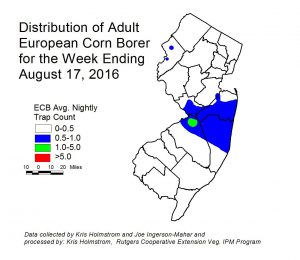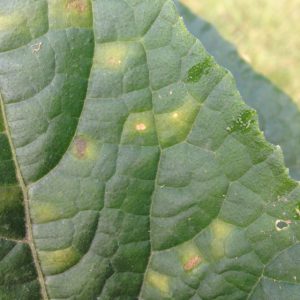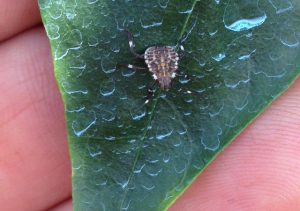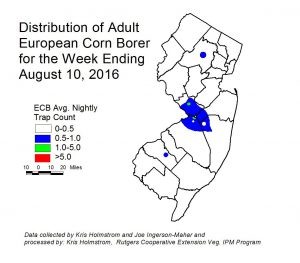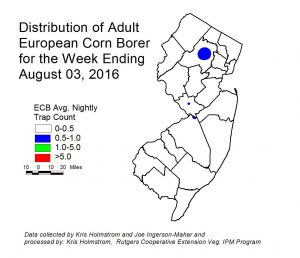Sweet Corn
European corn borer (ECB) adult activity has declined to nearly nothing at this time, and no map image is in this edition. The second flight was extremely low, with fall armyworm injury much more dominant this year. It is possible that we will have a partial third flight, but as the second was so low, it is not likely that it would be of much consequence. As always, consider treating when the number of infested plants in a 50 plant sample exceeds 12%. Any planting remaining at or above threshold as it proceeds to full tassel should be treated, as this is the last stage at which ECB larvae will be exposed and vulnerable to insecticidal sprays.
See the 2016 Commercial Vegetable Recommendations Guide for insecticide choices.
The highest nightly ECB catches for the previous week are as follows:
| Beckett 1 | Lawrencevile 1 |
| Chester 1 | Little York 1 |
| Crosswicks 1 | Matawan 1 |
| Georgetown 1 |
Fall armyworm (FAW) infestations continue throughout NJ, with high infestation rates now appearing in all parts of the state. This pest can be devastating to small corn plants, and in fact the worst infestations are currently in shorter whorl stage plantings. Fields down to seedling stage should be scouted weekly for signs of infestation. Treat when FAW alone or in combination with ECB damage exceeds 12% plants infested. FAW do not respond well to pyrethroid insecticides. The most useful products are those in the IRAC group 28 class (Coragen, Exirel) or the IRAC group 5 class (Radiant, Entrust), or combination products including these classes. See the 2016 Commercial Vegetable Recommendations Guide for insecticides effective against FAW.
